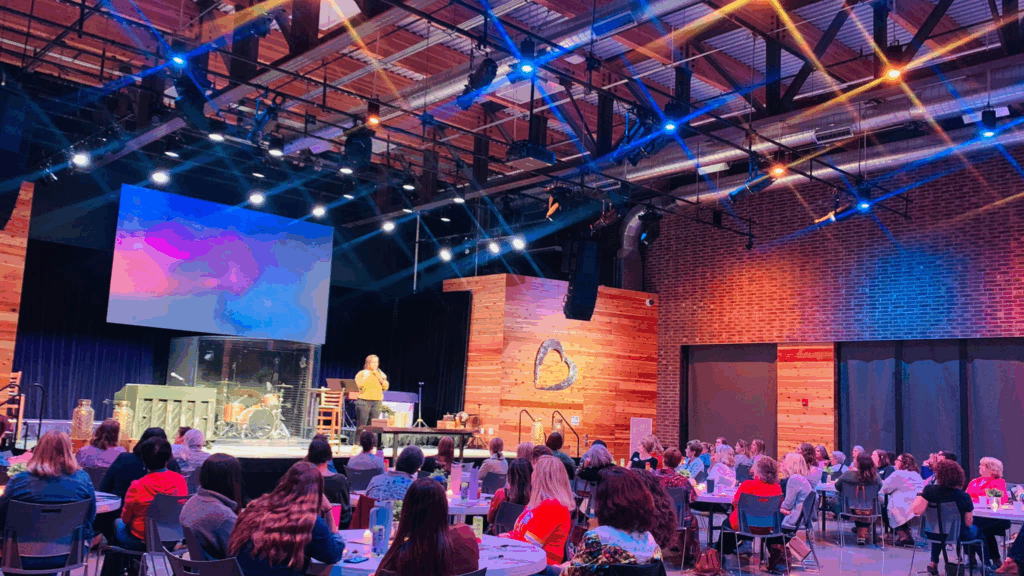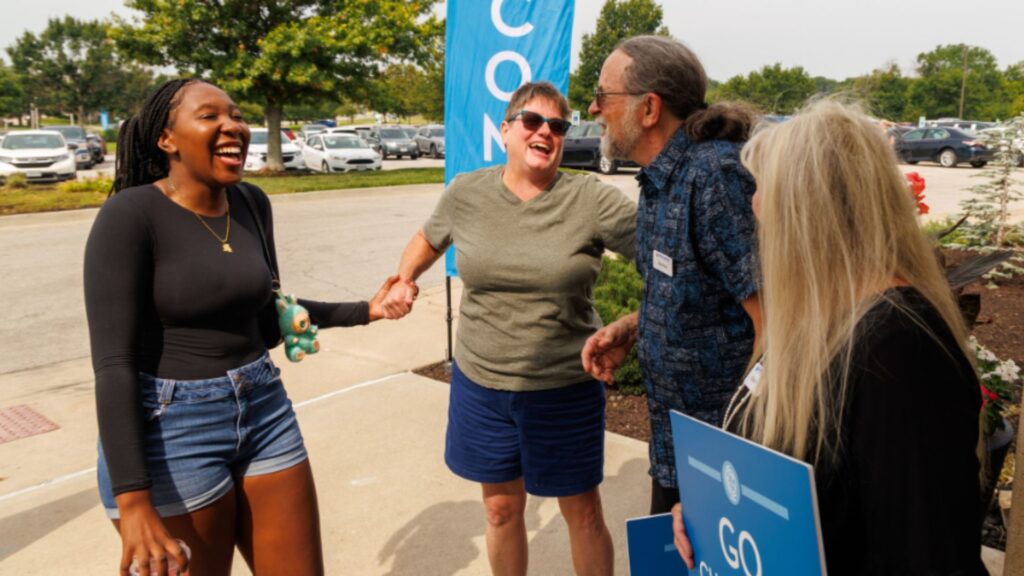I visited a church that wanted to be welcoming but was totally unaware their worship service was inwardly focused. I drove into the parking lot but couldn’t figure out which building or which door to go in, so I spent a lot of time wandering around, feeling lost. When I found the worship space, an usher said hello, and handed me a bulletin, but left me to find a seat on my own.
During the service, I was present, but still “lost.” No one involved in leading worship introduced themselves. The congregation seemed to be responding to secret hand signals… when one person came to the podium, they all stood automatically. When another person stood, they somehow turned to the right page in the hymnal (it wasn’t listed in the bulletin – I checked!). During the announcements, the leader said, “We’re so glad to see Bob is back with us.” Who the heck is Bob, and where had he been? And then, “The TNT class is having a potluck lunch this afternoon.” TNT? Who is that? Can anyone attend, or just those who know what TNT means?
- 3 MIN READ
- Key Takeaways
- Why clear instructions make guests feel they belong during worship
- The secret signals problem: when regulars know but newcomers are lost
- How outward-focused planning removes obstacles before guests even notice them
You get the idea. The worship service was structured and led in a way that met the needs of the people who were already members but left guests feeling out of place and uncomfortable. Planning a guest-friendly worship service means looking at everything through the eyes of a new person and doing your best to ensure a new person will be comfortable participating and can easily follow what’s going on. Excellent, guest-friendly worship planning assumes there are guests in the room every week, and does everything possible to reduce their anxieties and/or discomfort. Here are a few things to think about as you’re planning your next worship service:
Signage: Can your guests easily navigate your property? A lack of sufficient signage tells guests you don’t get new people very often, and you’re okay with that.
Introductions: Everyone who’s helping lead worship should introduce themselves or have their name/title on screens. Guests don’t know who’s who at your church, even if your regulars do.
Welcome: Offer a specific welcome to first-time guests. This communicates that you were expecting and welcome guests.
Words: For any element in which the congregation will be participating – whether prayers, liturgies, or songs – make sure the words are printed on screens at the front of the room or in the bulletin. Don’t assume guests know the words to anything.
Contexting: At the beginning of your service, provide just a little information about what’s going to happen, so guests know what to expect. It can be as simple as, “We’ve gathered here today to worship God, to listen for God’s word through prayer, song, and message, and we’ll close today’s service with communion.”
Instructions: Provide clear verbal instructions for every element of the service. Where can they find the words to the songs? Which words do they read in the liturgy on the screen? Are guests allowed to take communion at your church? How is communion done at your church?
Contact Information: Develop a low-stress method of asking for guests’ contact information. You can’t follow up unless you have their contact info. Don’t pressure them or make them stand, just ask. They may visit several times before they provide it.
Announcements: Announcements should use clear, guest-friendly language, without acronyms or “clever” ministry names, and be focused on things that guests can participate in. Also, state clearly whether guests are welcome at activities and events.
Closing Invitation: Thank people for worshiping with you and invite them to return next week.
Follow up: When you get a guest’s contact information, follow up, within 24 hours if possible. Thank them for visiting and invite them to return. Prompt follow-up tells a guest you noticed them and they matter to you.
Andy Stanley, founding pastor of North Point Community Church, describes why churches should be outward focused this way: “Our mission is to reach people and draw them to God. We need to remove any unnecessary obstacle for those [unchurched people] who are turning to God.” When guests feel welcome and comfortable, they relax. That opens the door for them to fully engage in worship and potentially have an encounter with God. Guests need to feel like they belong, or to at least see the potential for belonging at your church.
As you plan your next worship service, think about it through the eyes of a newcomer. What do they see? What do they hear? What do they experience? Outwardly focused worship is the easiest way to remove one of the biggest obstacles guests encounter.

Written By:
Yvonne Gentile
Lead Director - Guest Experience & ShareChurch
Bio
Yvonne Gentile is our Guest Experience & ShareChurch Lead Director, a former retail industry executive, and co-author of four books. She and her husband Frank have been part of Resurrection since 1996. Together they enjoy movies, road trips, and spending time with family.



